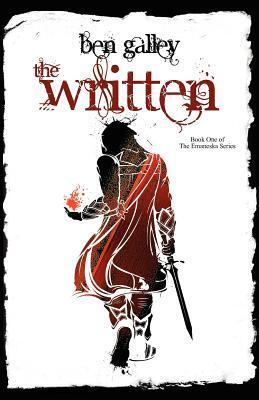Beth Tabler's Blog, page 179
June 29, 2022
#SPFBO8 – Review and Cut – Debunked by Dito Abbott
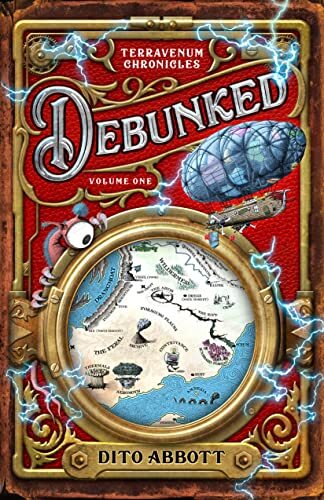 What it’s about:
What it’s about:Sometimes adventure knocks. Other times, it kicks the door in.
“Dearest Alexandria and Ozymandias,
If you are reading this, I have perished. My demise likely involved some manner of spiked pit or curiously fanged beast, so it’s doubtful I suffered long. Do not try to find me—the path is too perilous, and I am lost to the mortal plane.”
When Alex and Ozzie read their grandfather’s latest “death” letter, they barely blink. Dying six times in two years has to be a record, even for an explorer as incompetent as Sir Quidby Forsythe III.
Faster than you can say “kidnapped by a giant, glowing lizard,” the Forsythe twins are dragged into a world of ancient prophecies, sarcastic swords of legend, mutant slime beasts, and a growing awareness their grandfather might be the greatest explorer in history.
With Skhaar the Annihilator hot on their trail, Ozzie and Alex must solve the mystery of Sir Quidby’s disappearance before they become the final victims of the Forsythe Curse.
My Thoughts
 It’s safe to say that DEBUNKED by Dito Abbot gets off to a strong start. If I had to make a comparison, it would be like if Douglas Adams wrote YA characters instead of Arthur Dent. We open with a letter from Ozzie’s grandfather, Sir Quidby. “I bequeath to you my travel journey,” the letter says. “Do NOT open it (but when you inevitably ignore my wishes and plumb its depths, remember; mystery and danger are jealous companions—you cannot flirt with one without courting the other).” And of course, chaos almost immediately ensues.
It’s safe to say that DEBUNKED by Dito Abbot gets off to a strong start. If I had to make a comparison, it would be like if Douglas Adams wrote YA characters instead of Arthur Dent. We open with a letter from Ozzie’s grandfather, Sir Quidby. “I bequeath to you my travel journey,” the letter says. “Do NOT open it (but when you inevitably ignore my wishes and plumb its depths, remember; mystery and danger are jealous companions—you cannot flirt with one without courting the other).” And of course, chaos almost immediately ensues.
I very much enjoy the humour of Abbot’s work. It’s very tongue-in-cheek, very self-aware, never overly clever, nor crass or uncomfortable. Humour is such a moving target from person to person, but most of the lines that I’ve highlighted were ones that made me laugh literally out loud, and I applaud that accomplishment!
Ozzie and his sister Alex are cleverly realized. Ozzie is quiet and a little bit awkward. Alex is our intrepid adventurer. Their sibling energy is on point throughout.
Mrs. Willowsby is a standout favourite. I loved this fierce maternal warrior, who seemed to live “undercover” as Sir Quidby’s housekeeper.
When Sir Quidby’s funeral is rather rudely interrupted by (as yet) unknown villains, Ozzie and Alex find themselves swept away into a world they didn’t know existed—and they team up with characters who are looking for Sir Quidby. The technology that Ozzie and Alex encounter is in turns interesting and hilarious. The Babel fish analogy was appropriately horrifying but useful.
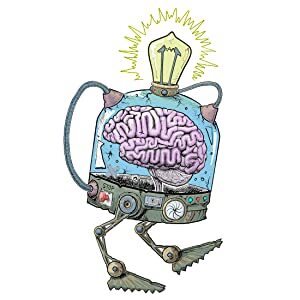 It’s in the aforementioned chaos that DEBUNKED begins to lose me a bit. I found the action hard to track, and we need to learn a lot about the in-world technology and species in order to keep up. This is a valid method of storytelling—I’m sure Ozzie and Alex felt pretty overwhelmed in their new reality!—but it’s something that I always struggle with. I found myself having to reread passages to figure out what I’d missed. And while the book was still very funny, I didn’t always know what I was laughing about.
It’s in the aforementioned chaos that DEBUNKED begins to lose me a bit. I found the action hard to track, and we need to learn a lot about the in-world technology and species in order to keep up. This is a valid method of storytelling—I’m sure Ozzie and Alex felt pretty overwhelmed in their new reality!—but it’s something that I always struggle with. I found myself having to reread passages to figure out what I’d missed. And while the book was still very funny, I didn’t always know what I was laughing about.
What I liked about Ozzie and Alex also, in some ways, added to the struggle. While I liked that they were both rather level headed as far as YA protagonists goes, this also meant that the story was being driven mostly by another character, Pascal, an inventor who also knew Sir Quidby. Pascal is anything but level headed. He’s impulsive, irreverent, and the questionable success of his inventions often pushes the chaos along. Having him drive the story might have been better served if he was given a POV through the book. As it was, I found that at times the chapters were so focused on what Pascal was doing that I would forget whether I was reading Ozzie’s or Alex’s POV, which made it harder for me to keep track of what, exactly, was happening. I will absolutely acknowledge that this is my preference as a reader showing, and not necessarily a criticism of Abbot’s style. It’s just a mismatch of Abbot’s execution against my taste.
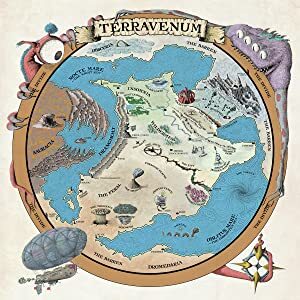 Added to this, whenever I try to think of comps for this book, they’re all sci-fi. The talk about technology, the airships, the electricity as a weapon. There’s some mention of dynami, which might be the in-world term for magic, and yes there is a sword, but it’s an overall vibe that shelves this book in sci-fi in my brain, especially with the strong Hitchhiker’s Guide influence. This, in of itself, is not a problem. However, this contest is for fantasy, so I begin to wonder if DEBUNKED might be a better fit for our sister contest, SFSPC. (Mr. Abbot, if you’re reading this, keep an eye on that contest. Maybe when they’re open for submissions, you could offer up DEBUNKED if you’re brave enough to take a second swing.)
Added to this, whenever I try to think of comps for this book, they’re all sci-fi. The talk about technology, the airships, the electricity as a weapon. There’s some mention of dynami, which might be the in-world term for magic, and yes there is a sword, but it’s an overall vibe that shelves this book in sci-fi in my brain, especially with the strong Hitchhiker’s Guide influence. This, in of itself, is not a problem. However, this contest is for fantasy, so I begin to wonder if DEBUNKED might be a better fit for our sister contest, SFSPC. (Mr. Abbot, if you’re reading this, keep an eye on that contest. Maybe when they’re open for submissions, you could offer up DEBUNKED if you’re brave enough to take a second swing.)
All in all, if you like your books to be hectic, hilarious without being crass, and heavily influenced by Douglas Adams, I urge you to pick up DEBUNKED. It’s well polished and a lot of fun.
This is, however, a cut for SPFBO.
I hope it’s some consolation to the author that I bought a physical copy for my daughter. She’s a lot smarter than me and she’s already enjoying it a lot!
Read DebunkedAdditional #SPFBO8 Posts To Check Out#SPFBO8 Review and Cut – A Deadly Bloom by Kody Boye
#SPFBO8 Review and Cut – Empire Under a Dying Sun by Joseph O. Doran
The post #SPFBO8 – Review and Cut – Debunked by Dito Abbott appeared first on BEFOREWEGOBLOG.
June 28, 2022
Six Elementals Interview – E.G. Radcliff
 Six Elementals Author Interviews will introduce prospective readers to some of the best writers in their genre you may, or may not, have heard of, via a series of six questions. I encourage you to check out the work of these phenomenal creatives! Links to their websites and purchase links will always appear, accompanying the interview. Check them out!
Six Elementals Author Interviews will introduce prospective readers to some of the best writers in their genre you may, or may not, have heard of, via a series of six questions. I encourage you to check out the work of these phenomenal creatives! Links to their websites and purchase links will always appear, accompanying the interview. Check them out!
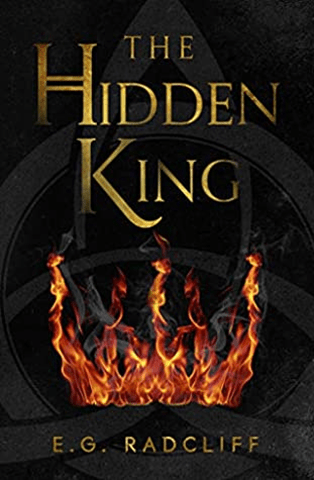 This is a distinct pleasure, in that I have the award-winning YA fantasy author, joining me: the amazing E.G. Radcliff! Her currently published novels include: The Hidden King, The Last Prince, and The Wild Court.
This is a distinct pleasure, in that I have the award-winning YA fantasy author, joining me: the amazing E.G. Radcliff! Her currently published novels include: The Hidden King, The Last Prince, and The Wild Court.
P.L.: E.G., thanks so much for joining Six Elementals Interviews! I am one of your super-fans, as you know, so this is very special for me! The Hidden King was one of my top ten books read in 2021! And I’m not alone, obviously, in my love for your debut novel. The first book in your The Coming of Áed series has racked up quite the literary prizes, including being an SPFBO SemiFinalist in 2020, a Book Bloggers’ Novel of the Year (BBNYA) SemiFinalist in 2020 & 2021, a BlueInk Notable Book, an International Review of Books Gold Seal Book, and a Kindle Book Award SemiFinalist in 2021. Congratulations on all the well-deserved accolades! It takes a lot of courage for a writer just to put their work out there and publish, much less enter awards. What do you feel is the value of submitting for, and potentially winning literary awards? How do you feel that the process, or the winning of the awards themselves, has helped your writing career, and your personal growth?
E.G.: Thank you! I do feel that there are benefits to submitting for awards. The most obvious are the immediate emotional ones; being offered an award feels like proof that all your hard work has paid off. There are, of course, plenty of other ways to get that kind of validation, but it’s a very potent feeling. The second benefit is more practical. Some of this recognition has allowed me to reach a broader audience than I otherwise would have (like the audiences of Publishers Weekly and Booklist magazines). It’s also a great way to encourage readers to take a chance on your book, since a book with an award tends to stand apart from the crowd.
P.L.: Well, having read your work, I can definitely attest it stands out! By now, many people in the Indie Fantasy community know all about your wonderful books, but for those who don’t can you please tell us what The Coming of Áedseries is all about?
E.G.: The Coming of Áed is an action-packed YA series inspired by Irish folklore, blending magic, found family, and some intense self-discovery. A young man must discover who—and also what—he is… and there are consequences.
P.L.: Oh yes, lots of delicious consequences! Do you write full time? If so, can you please tell us about being a full-time novelist (something many of us aspire to be)? If not, can you disclose a little about your other work, or hobbies and interests outside of writing?
E.G.: As much as writing full-time sounds nice on paper, I don’t think I could ever do it. I love writing above just about all else, but I’m not sure I was built to stay put for so long. My job is at a library, but I am also engaged in my community (I play water polo and sing in a choir, for example). I draw, play the lute rather badly (I’m getting better!), and keep lists. The last one sounds odd, and it is, but it’s my version of collecting stamps–I have lists of idioms, lists of mushrooms, lists of proverbs and sayings, lists of quotes from friends, lists of things I’ve seen out the windows of trains… I have lists of lists.
P.L.: Sounds like you are multi-talented! And great you have all those interests! Can you please speak a little bit about your writing journey? How long have you been writing, what inspired you to write, and what made you elect to self-publish, instead of small presses or querying, trying to obtain an agent, and going for a “Big Five” traditional house?
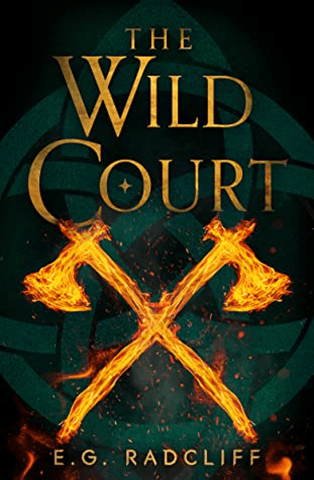 E.G.:
I’m not sure when I decided that I wanted to be an author. I’ve loved storytelling for as long as I can remember; I told tales before I could hold a pen, and when I learned to read and write, it was like learning how to walk. I tripped a lot, but it felt natural. Truthfully, I can’t remember when I started writing for pleasure. It was always something I’d just done, but I didn’t realize it could be more than a pastime until around the time that I hit my late-teens. In the past, I hadn’t put much thought into the mostly-instinctive act of writing, and so the pleasure I reaped didn’t last beyond the end of the writing process. That changed when I started trying longer pieces, pieces where I experimented with new skills and played around with more difficult techniques, because I created results I could re-read and be proud of. I love the challenge that comes with that, and I love the anticipation I feel when I’m building up to an exciting plot point. Writing is the one activity where I lose all track of time; I’ll look up at two in the morning and realize that I should have gone to bed ten pages earlier. I just can’t get enough.
E.G.:
I’m not sure when I decided that I wanted to be an author. I’ve loved storytelling for as long as I can remember; I told tales before I could hold a pen, and when I learned to read and write, it was like learning how to walk. I tripped a lot, but it felt natural. Truthfully, I can’t remember when I started writing for pleasure. It was always something I’d just done, but I didn’t realize it could be more than a pastime until around the time that I hit my late-teens. In the past, I hadn’t put much thought into the mostly-instinctive act of writing, and so the pleasure I reaped didn’t last beyond the end of the writing process. That changed when I started trying longer pieces, pieces where I experimented with new skills and played around with more difficult techniques, because I created results I could re-read and be proud of. I love the challenge that comes with that, and I love the anticipation I feel when I’m building up to an exciting plot point. Writing is the one activity where I lose all track of time; I’ll look up at two in the morning and realize that I should have gone to bed ten pages earlier. I just can’t get enough.
For me, independent publishing was the way to go, for a variety of reasons. It allowed me to function on my own schedule, arrange my own promotions, and market the way I chose. But I wanted to make sure I produced a piece that was as high-quality as any book that had been through the works at a “big-5” publishing house, so I spent a long time with editors and artists to ensure that it was up to snuff.
P.L.: Your books are definitely of top quality, and wow, your covers are glorious!!! What do you think is more difficult to write, and garner larger reading audiences? Great standalones or great series? Will you write both?
E.G.: It’s probably easier to draw attention to a series, since every new release is a reminder about the books before it, and the sales accumulate over time. It’s harder to maintain consistent reader attention about a standalone unless you already have a committed following. I gravitate toward series myself, since I have little interest in writing 1,000-page novels like Steven King, and would prefer to divide a story into sections; besides, the idea that each book in a series still needs to have its own compelling arc is a lovely challenge. It isn’t as simple as dividing a long story into multiple parts, and I like that.
P.L.: Personally I LOVE series, but am really learning to appreciate stand-alones more and more, especially as companion novels to compliment series. Can you tell us a little bit about how magic works in your series, what you can reveal without spoilers? Would you consider it hard or soft magic?
E.G.: I had so much fun putting together the magic system for The Coming of Áed. At first, it was a challenge, since I started writing before I planned a single thing, and the system started to take shape before I’d actually settled on any rules. It got to a point very quickly where I needed to codify it, or else the system would be too soft to hold up under artistic scrutiny, and so I sat down and arranged everything into a pattern I could consistently follow going forward. I’m really happy with the result.
In The Coming of Áed, there is a veil that divides the world.
On one side of the veil, the human realm—everything feels familiar and concrete. On the other side, the otherworld—is the home of fae, who probably think it’s familiar and concrete, but nobody asked them.
Like anything else in the natural world, the veil operates on a cycle. It’s at its most impenetrable during the steady seasons of summer and winter, and it is most vulnerable at times of flux like autumn and spring. That means that two times every year, it becomes thin enough to allow the passage of creatures from one side to another. These openings are marked by celebration and tradition: the Festival of Fire in the spring, and the Festival of Souls in the autumn. Once the veil closes again, nothing can pass through until the next festival—with some exceptions.
The veil is natural, and thus imperfect. Here and there, little tears open and heal, and they usually shift so rapidly that nothing could possibly find them, much less pass through. On occasion, though, one will stabilize. Natural tears are invariably small, much too small for anything larger than a field mouse or a will-o-wisp, and by and large, they stay undetected.
This is helped by the fact that they most often form in naturally liminal spaces, like cave passages, places where water moves underground, or deep-forest mushroom circles. If, however, one happens to find a tear, it is possible to widen it enough to allow passage—meaning, someone needs to die on that spot. Death of a thinking mind constitutes the irrevocable movement from one state to another, and that interacts with the veil in a very specific way: if a human dies in the tear, the resulting gateway will enable passage into the human realm, and if a faerie or other sentient fae creature dies in it, it will enable passage in the other direction. Once made, these gateways are stable.
Magic originates on the fae side of the veil. It occurs in many states: certain minerals, for example, carry connective magic that links all rocks in a deposit, certain small animals employ magic camouflage to protect them from predation, and some plants acquire magical properties under certain conditions and are thus used in the making of medicine. Magic can even occur at larger scales, such that my water horse, for instance, wields power over whatever body of water it calls home and can even command vessels on its surface.
The most potent magic, however, is fae.
Faeries live according to a natural duality: there are two kinds of fae magic, and two kinds of fae. Low fae and high fae tend to live separately, with low fae organized into discrete, diverse courts while high fae have historically been united under a single monarch. No matter low or high, all fae have two very unique realms of power: the first is the ability to summon fire. It is this ability which illustrates the most glaring difference between high and low-court fae. Low fae have fire which resembles a natural wood fire, typically orange or red in color, and like natural fire, it causes no harm to other fae. High fae, on the other hand, possess brilliant white flames which burn hot enough to injure low-court fae. This fire can also be cast into shapes, usually weapons, so long as the wielder doesn’t let go of it.
The second type of magic, more hauntingly, is power over the mind. Most often, this presents as little more than the ability to sense emotion very acutely, but a combination of natural talent and active cultivation can elevate this to terrifying levels: skilled faeries have the ability to create emotion in another. This can be as simple as extending one’s own emotions onto the recipient, or as involved as inciting madness so specific as to induce specific hallucinations. This is often perceived as illusion magic.
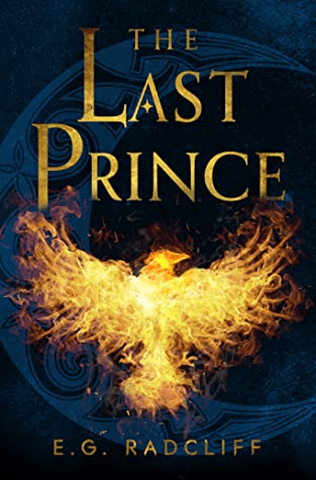 Humans, while not naturally magical, are not excluded from practicing the more mysterious arts. Magic tends to emanate from those objects and creatures which produce it, and the imperfect barrier of the veil permits a small degree of this untethered magic to cross into the human realm. It is this diffuse power that humans can bend to their will. Given that it is not interwoven with their own being, they have much more freedom in how they use it, even if it is far less powerful than it would be if it were inborn.
Humans, while not naturally magical, are not excluded from practicing the more mysterious arts. Magic tends to emanate from those objects and creatures which produce it, and the imperfect barrier of the veil permits a small degree of this untethered magic to cross into the human realm. It is this diffuse power that humans can bend to their will. Given that it is not interwoven with their own being, they have much more freedom in how they use it, even if it is far less powerful than it would be if it were inborn.
Humans use a number of methods to channel magic to their purposes. The most common is the verbal spell: a combination of nonsense syllables which by their shape and sound help the concentration of the caster to flow into the shape which the magic will follow, achieving the desired end. Physical movements–dances, patterns of hand gestures, holding very specific positions–can achieve the same effects. This is not dissimilar to meditation, and talented casters can often forgo the guidelines of a spell.
In order to master magic safely, most human magic-users begin learning as children. Children tend to be able to command less magic at once, meaning that the power that is misdirected when a spell goes wrong can do much less damage.
Culturally, magic and its practitioners are regarded with distrust, but its occasional usefulness cannot be denied.
This is the magic system that underpins all the action in The Coming of Áed—experienced at its peak in The Wild Court.
P.L.: I’m so looking forward to reading the rest of your series, including The Wild Court! E.G., this has been amazing! It has been such an honour to have you join me on Six Elementals Interviews! Thank you so much for interviewing with me!
The interview Originally Appears here

Twitter: @EgRadcliff
Goodreads: https://www.goodreads.com/author/show/19274226.E_G_Radcliff
Instagram: https://www.instagram.com/egradcliff
Website: http://www.egradcliff.com
Check Out Other InterviewsSIX ELEMENTALS AUTHOR INTERVIEW – STEPHEN ARYAN
The post Six Elementals Interview – E.G. Radcliff appeared first on BEFOREWEGOBLOG.
Review of RIVER OF THIEVES by Clayton Snyder
 For my final #Grimdarkmasters read of April 2022 (the month where I dedicate most of my TBR to reading the works of four of the top Indie grimdark writers) I read “River of Thieves” (Thieves’ Lyric Book One) by Clayton Snyder.
For my final #Grimdarkmasters read of April 2022 (the month where I dedicate most of my TBR to reading the works of four of the top Indie grimdark writers) I read “River of Thieves” (Thieves’ Lyric Book One) by Clayton Snyder.
This book was a Self-Published Fantasy Blog-Off SPFBO Semi-Finalist in 2019, and Snyder himself is one of the most decorated grimdark authors out there. He’s a three-time SPFBO Semifinalist, an SPFBO 7 Finalist, a WSFA (World’s Small Press) & 2-time Stabby Nominee, a Booknest Longlist & Grimmy Award Winner.
Still, even knowing what an illustrious writer Synder was, and having previously read some of his work, I was caught wholly unprepared for what I read in “River of Thieves”. It was mind-boggling, and truly I struggled to write this review, because it’s hard to review a book like this one. But I mean all this only in a good way.
The main plot is the simple part. It’s about two thieves, Cord and Nenn. Larcenous funny-guy with a heart of gold underneath, Cord has a nasty habit of not staying dead after every heist, where invariably he gets into trouble and ends up, of course, being killed. These resurrections appear to be wearing more and more on him, as nastier creatures emerge from his mouth post-demise, and he’s getting more tired of dealing with dying over and over again, period.
Nenn is Cord’s deadly, knife-wielding, brooding, intense but witty and sharp-tongued companion who gets to narrate a large part of the tale first-person. She is, against her better judgement, always getting talked into going along with Cord’s hair-brained ideas. But she too is worried about the affects constantly dying and coming back is having on her friend. So when Cord suggests one last big job (you know these always go horribly wrong) to set them up for retirement, Nenn – daydreaming of settling down with a nice woman or man one day, and living peacefully in a nice home, removed from thieving and mayhem – reluctantly goes along.
Collectively, this group loves to cuss, loves to hump regardless of gender or which side good or bad their bedding partner is on, loves to stab, and are fiercely loyal to one another. They rack up the body count, and leave a trail of havoc wherever they go, but their fearless approach to facing their own doom, laughing all the way, and the way they bind together like a very dysfunctional family is admirable, and will have the reader rooting for them.
Cord recruits two other sidekicks to join him and Nenn. One is a frenemy, a massive, hulking man named Rek, who can crush skulls with one hand, but happens to have a soft spot for kittens. The other is a beautiful, mysterious witch with some daunting powers named Lux who Nenn gets all hot and bothered about.
The foursome follow Cord’s plan which looks like a suicide mission, to infiltrate the realm of King Anaxos Mane, a notorious tyrant, with lots of human and inhuman protection.
Sounds like a classic fantasy heist tale? Think again dear readers, nothing typical about this book.
Parts of the book had me dazed and confused, as we dive headlong into a world of magic-wielders, gods, spirits, undead, more. While the main plot and main point of view is very straightforward and linear, there are a few additional POVs thrown in later in the book that give some momentary vertigo, but once you get through them the reader will likely see how much more enriching the story becomes for them.
The characters are exceptional. It’s not a big cast, and it allows the reader to really connect with the four main thieves. The relationships are filled with sarcasm, animosity, and derision layered on top of deep bonds of friendship, and it makes for a truly poignant and entertaining read. In particular, I loved the dynamic between Rek and Cord, even though the Cord-Nenn partnership is at the heart of the narrative.
The villains (that is the ones who are not the main characters) are quite nasty, and the Harrowers in particular are detestable. And I truly HATED Rook. The gods are capricious (which I love) and you can sense the humans are really just pawns in their schemes, despite the gods professing their affection for certain characters. The worldbuiding, exposition, and prose is sneakily fantastic. Snyder can really write well, and I had to go back and re-read some of his eloquent descriptions of landscapes and settings because I realized I was missing out on some great stuff that might have otherwise gotten lost in the black humour and action pieces. Synder’s prose can be very beautiful, even lyrical, at times, and it is never dull, always ironic and sharp.
From Orlect, to Midian, to the open water, the settings were gloriously depicted, and felt real. Engines propelled by hearts that have been ripped out of chests, zombies, ghouls, and other macabre features of the book are really neat and inventive that will delight dark fantasy fans.
There are some truly gut-punching moments in the book, and please don’t expect happy endings here. Though the conclusion is somewhat definitive, and are more installments, don’t expect a pleasing and neatly-wrapped up resolution to this book. As a matter of fact expect to have your heart broken a few times, and for some things to be left rather ambiguous.
In saying all this, the book was funny as hell. If there’s one thing that the reader will quickly find out about Snyder is that he has a wicked sense of humour, and can really bring the satire.
In this book, the complete paragraphs of banter are just as good as the quick and deadly one-liners. We as readers get to indulge in that little juvenile that lurks within all of us that says “you just have to laugh at this because it is freaking funny” warring with the adult that is saying “you shouldn’t be laughing at this, it’s juvenile” (stifles a laugh) and the juvenile always wins. But there is a LOT more than adolescent humour going on here – most of the humour is very adult, dark, and viciously, outrageously hilarious. I had to stop reading several times because I was howling, laughing nearly to tears, or just appalled at myself at the fact that I was laughing in the first place.
There is an abundance of pop culture references, innuendo about current world politics, and even nods to famous books and authors such as Scott Lynch’s Gentleman Bastards series. None of it felt out of place, and only enhanced my reading experience, and that is a credit to Synder in the way it was done, because usually this sort of stuff I find somewhat distracting in a fantasy book. But that’s my particular taste issue, not anything an author does wrong by going there.
Synder tackles some compelling themes in the book, including religion, and apathy towards it, as seen through Nenn’s disdain:
“I’m not much for religion, never really was. It’s hard to believe in any deity that says ‘This is your life. You can’t improve it, but if you worship me, I can make it not worse. That’s not patronage, it’s blackmail. It’s a protection racket. I’d seen a million of them, growing up in the streets and the alleys. I could respect the hustle, but not the sentiment.”
I need to pay homage here to the tale within a tale in the book (a feature I adore in fantasy), the story of the Goblin King. This was phenomenal: I recommend the reader slow down and pay attention to this one when it appears.
I cannot conclude a review of this book without mentioning some of the chapter titles. These days one rarely finds chapter titles anymore in books, however…here are some of them in “River of Thieves”: Bandit Lettuce Tomato, This Asshole Again, That’s a Filthy Joke You Dickhead, Storytime for Wayward Rogues, Party Crashing and Insurrection for Fun and Profit, Pirates are Just Thieves with More Syphilis and perhaps my favourite – Cat Shit and Violence. Do I need to say more?
Finally, to state the obvious, this book is truly dark. Don’t read it if you are not ready for that. I found Qoth’s tale interspersed throughout the narrative was particularly bleak and gruesome, but as noted above, very valuable into learning more about the overall story and character motivations. Like most grimdark books – and remember I consider Snyder a grimdark master – prepare to be surprised, horrified, creeped out, and be given lots to ponder after you finish the book.
Crude, rude, funny as hell, gory, bizarre, ultimately brilliant, “River of Thieves” goes into my consideration for my top books I read so far in 2022, and the twisted genius that is Clayton Synder has not disappointed me yet. I plan to read everything this very talented writer writes.
Read River of ThievesThe post Review of RIVER OF THIEVES by Clayton Snyder appeared first on BEFOREWEGOBLOG.
June 27, 2022
Review of THE WRITTEN by Ben Galley
Farden. Farden is one of the brightest stars, one of the most feared mages and fierce fighters, and the most seasoned and heralded veterans among all the mages.
Ben Galley needs no introduction. Arguably, only a handful of other self-published fantasy authors have the combination of name-recognition among readers, influence in the Indie fantasy scene, and acclaim that Galley enjoys.
Galley’s books have racked up awards such us Booknest Fantasy Awards, Library Journal Book of the Year, and numerous Self-Published Fantasy Blog- Off (SPFBO) semi-final and finals placements. A self-publishing consultant, he’s also been a guest speaker in prestigious locations such as the London School of Economics. Galley is considered an influencer in the indie fantasy sphere, has published more than 13 books to-date, and is highly successful. But every illustrious writing career begins with one book, and for Galley that book was The Written, Book One of the Emaneska Series.
I always like to read the first book ever written by established authors, even if I have heard their later works are a vast improvement, as is typical as writers grow and evolve. In this case in the month of April 2022, I was dedicated to reading four of the most lauded Indie grimdark writers, Galley being one of them. Thus, April 2022 became my #Grimdarkmasters reading month. So, due to all this, I read Galley’s first book, The Written, last month.
While his debut novel, the talent of Galley is plainly on display in The Written, and I can see why this book launched Galley’s current fame, assuming he has improved his writing since this first entry.
The Written begins as a bit of a murder mystery. A powerful mage from the land of Arka, whose identity is unknown, is summoned by five scholars who have uncovered something extremely dangerous in a powerful spell book. This is no uncommon danger, but an existential threat to humankind. But the mage, incomprehensibly, brutally slays the scholars, and steals the book.
Enter our protagonist, Farden. Farden is one of the brightest stars, one of the most feared mages and fierce fighters, and most seasoned and heralded veterans among all the mages. The mages in the book are an ancient order of warrior / magicians, who have spell books inked on their backs in the form of elaborate tattoos (amazing concept). Farden is tasked to find out what happened to the book, and who slew the scholars.
His journey takes him across the lands of Emaneska, where he encounters daunting magical adversaries, conspiracies, attempts to overcome ancient prejudices and hostilities to form alliances for the good of the world, and faces unseen betrayals and double-crossing. While he is by nature a bit of a loner, Farden needs the assistance of trusted long-time allies, and new, more shaky alliances, and his own formidable skills, to survive, and attempt to stop those who would risk destroying the world, to serve their own lust for power.
I found Farden to be a very interesting character, and a good lead for the book. We get several other POVs, in smaller snippets, but Farden is the focus of the narrative. The mage is at moments recalcitrant, impulsive, brash, and is moody, mercurial, and also somewhat introverted and brooding. Yet he is very much dutiful, loyal to his friends, and courageous to a fault. He can also show humility, along with some pettiness at moments, that made him a very believable person.
There were some great secondary characters, but Farfallen the old dragon was definitely my favourite, with the vampyre Durnus and Svarta the Siren Queen also stand-outs.
Galley richly populates his Emaneska world – seemingly loosely based on our own world, with Albion standing in for Britain, for example – with every manner of beloved fantasy creatures from our favourite tropes. Wyrms, dragons, vampyres, lycans, and more (storm giants???!!!) appear on the pages of The Written, which will delight many a fantasy fan. The worldbuilding feels rich, including the magical school of the mages in the Arkan capital of Arfell.
On a special note, I mentioned: dragons. Many of us love them, and we want to see them well-done and Galley does an exceptional job here, and with all the supernatural creatures in the story. They all have their own unique feel, culture, idiosyncrasies, customs.
The fight scenes are plenty furious, breathtaking, and the magical element added to these combat sequences really made for some thrilling reading. With a very intricate and hard magic system, where the reader will develop an excellent understanding of how magic is wielded, its consequences, who has more magical power than who, and what is a talisman rather than what or who can independently use magic without needing a conduit.
In terms of the themes, I can see now where the genesis of Galley into truly dark fantasy began. For example, the school for the Written is no cake-walk, but a brutal, unforgiving trial, where many young aspirants don’t survive. The Arkmage / Undermage politics I found very compelling and ruthless, and that was awesome, as I love me some great political intrigue. And I particularly found the lycan story to be very dark, emotive, and I felt sorry for him, and wanted to know even more about him.
Here I must comment on and give credit to Galley for his fabulous prose. I was enamoured of it from the book’s lovely opening lines:
“It was snowing outside. The white flakes drifted lazily in the chill night breeze, dusting the rocky mountainside with an ivory blanket. Ice crystals flurried and spun, dancing through the cold night air, skittering along the windowsill. By all rights, it was a foul night for Arfell.”
The Written is an invigorating, very well-written, character-driven epic fantasy, and checks all the boxes in terms of being epic in scope, filled with magic, creatures, heroes, sword fights, betrayals, murder, and intrigue. This is yet another example of a book where the tropes are done so well, it does not matter a hoot that there are tropes.
The ending of the book was fantastic and surprising, and I am all in for continuing the Emaneska series.
4.5 stars for “The Written”!
Review – Bloodrush by Ben Galley
Review of Ben Galley’s Chasing Graves
Read The Written
ASSISTANT EDITOR AND AUTHOR P.L. STUART

I’m an experienced writer, in that I’ve been writing stories all my life, yet never thought to publish them. I’ve written informally – short stories – to entertain friends and family, for community newspapers, volunteer organization magazines, and of course formal papers for University. Now, later in life, I’ve published what I believe is a great fantasy novel, and definitely worth reading, called A Drowned Kingdom. My target audience is those who enjoy “high fantasy”. A Drowned Kingdom is not “dark fantasy”. It’s written in a more idealized and grandiose style that I hope isn’t too preachy, and not too grim. Still, I’m hoping my book has appeal to those who don’t typically read this type of work – those who don’t read fantasy of any kind – because of the “every-person” themes permeating the novel: dysfunctional familial relationships, extramarital temptation, racism, misogyny, catastrophic loss, religion, crisis of faith, elitism, self-confidence, PTSD, and more.
Many of these themes I have either personal experience with, or have friends or family who have dealt with such issues. I’ve had a long professional law enforcement career, undergone traumatic events, yet been buoyed by family, faith, and positivity. I’m a racialized middle-aged man. I’ve seen a lot of life. Ultimately I want the planned series, of which A Drowned Kingdom will be the introduction, to be one of hope, and overcoming obstacles to succeed, which I believe is my story as well. My protagonist, Othrun, will undergo a journey where he’ll evolve, change, and shape a continent. He’s not always likeable. He’s a snob, bigot, is vain, yet struggles with confidence. He’s patriarchal. Overall, he’s flawed. But even ordinary flawed people can change. We’re all redeemable.
Ordinary people can make a difference, not just fictional Princes. I want that message to shine through my work.
WHERE TO FIND HIMTwitter – @plstuartwrites
Facebook – @plstuartwrites
The post Review of THE WRITTEN by Ben Galley appeared first on BEFOREWEGOBLOG.
#SPFBO8 Review and Cut – The Inquisitor by H.C. Harrington
 The Inquisitor is well-paced, Nestor’s inner turmoil and intellectual mind making him an engaging protagonist and the murder mystery will have any Agatha Christie or whodunit fan lapping it up.
The Inquisitor is well-paced, Nestor’s inner turmoil and intellectual mind making him an engaging protagonist and the murder mystery will have any Agatha Christie or whodunit fan lapping it up.
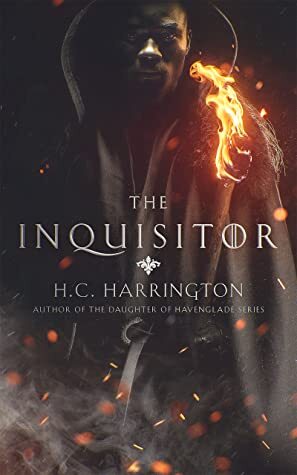 What is it About?
What is it About?A brutal murder, a disgraced inquisitor, and a city of secrets.
From the Amazon best-selling author of Daughter of Havenglade comes, The Inquisitor.
In the port city of Pax Grati, a highborn daughter betrothed to the son of a powerful lord has been brutally murdered.
Nestor Atius, left to rot in the dungeons has one chance to find the killer and bring justice to her family and the realm.
But when an unlikely friend reveals the investigation is more than meets the eye, Nestor must make a choice.
As he uncovers the truth, it becomes more and more clear, he is the killer’s next target.
A fantasy mystery from the Havenglade World.
My ThoughtsNestor used to be an Inquisitor, a priest belonging to the Order of the Scroll and a man of great reputation and integrity. But now he is a fallen man and imprisoned for betraying the code of celibacy of the order and falling in love with a woman who now haunts his thoughts. But Nestor is given a chance of redemption, absolution, and freedom. He must use his skills and mind as an Inquisitor to solve the murder of Lady Jillis, the eldest daughter of Lord Tibius Kopp. The catch? He only has five days to do this. Battling with racial prejudice and many suspects all with something to hide, he must contend with the challenge ahead as well as his inner turmoil.
This was the first SPFBO book I chose. The story sounded intriguing, a murder mystery in a fantasy setting with a damaged man fighting his demons really caught my attention. I think the premise and all the elements included make for a potentially fantastic story and, for the most part, it is.
First, I really enjoyed the character of Nestor, our protagonist. H. C. Harrington clearly defines his character, particularly his intellect and attention to detail, traits that are vital to his job as an Inquisitor. He is a foreigner in the lands that the story is set in. He is a man of darker skin, and as such, he is subject to xenophobia and racism, which makes his job more difficult. Harrington integrates this well into the investigation; people are untrusting of Nestor, and unwilling to open up, which creates tension throughout effectively, though at times, I would have liked to have explored this a little deeper. But for the purposes of the plot, it worked well enough.
Harrington’s world-building was good, it had as much depth as it needed to have. Because I usually read epic fantasy or long series, I personally found the world-building a bit too surface level, but for anyone who prefers plot and character over world building you will get along with this just fine.
The murder mystery itself is well thought out. Nestor’s logic and attention to detail makes for some excellent scenes in deduction and using evidence to propose a hypothesis. The questioning of suspects and people who knew Lady Jillis have a police procedural feel about them that I really enjoyed, rather like you get in detective TV shows like CSI. Though at times, I did feel some of the interrogation scenes fell into cliché. For example, Nestor often likes to slam his fist down on the table to make a point and intimidate. Also a few good cop, bad cop type scenarios which took me out of the story just a touch, but I did find myself invested in the questioning and enjoyed picking holes in potential murder suspects’ alibis.
The prose is simple and straightforward, lending itself to a quick and fun read. The Inquisitor is well-paced, Nestor’s inner turmoil and intellectual mind making him an engaging protagonist and the murder mystery will have any Agatha Christie or whodunit fan lapping in up. Unfortunately for me, despite enjoying this book, this is a cut.
Read The Inquisitor#SPFBO8 Review and Cut: House of Bastiion by K.L. Kolarich
The post #SPFBO8 Review and Cut – The Inquisitor by H.C. Harrington appeared first on BEFOREWEGOBLOG.
#Musicmonday Mickey by Toni Basil

image
Today’s kick-ass song is…
drum roll..
The earworm that is Mickey by Toni Basil
Lyrics to Mickey
Oh Mickey, you’re so fine
You’re so fine, you blow my mind
Hey Mickey, hey Mickey
Oh Mickey, you’re so fine
You’re so fine, you blow my mind
Hey Mickey, hey Mickey
Oh Mickey, you’re so fine
You’re so fine, you blow my mind
Hey Mickey, hey Mickey
Oh Mickey, you’re so fine
You’re so fine, you blow my mind
Hey Mickey
Hey Mickey
You’ve been around all night and that’s a little long
You think you’ve got the right but I think you’ve got it wrong
Why can’t you say goodnight?
So you can take me home, Mickey
‘Cause when you say you will, it always means you won’t
You’re givin’ me the chills, baby, please baby don’t
Every night you still leave me all alone, Mickey
Oh Mickey, what a pity, you don’t understand
You take me by the heart when you take me by the hand
Oh Mickey, you’re so pretty, can’t you understand?
It’s guys like you, Mickey
Ooh what you do Mickey, do Mickey
Don’t break my heart, Mickey
Hey Mickey
Now when you take me by the, who’s ever gonna know
Every time you move, I let a little more show
There’s something you can use, so don’t say no, Mickey
So come on and give it to me anyway you can
Anyway you want to do it, I’ll take it like a man
Oh please baby, please don’t leave me in this jam Mickey
Oh Mickey, what a pity, you don’t understand
You take me by the heart when you take me by the hand
Oh Mickey, you’re so pretty, can’t you understand?
It’s guys like you, Mickey
Ooh what you do Mickey, do Mickey
Don’t break my heart, Mickey
Oh Mickey, you’re so fine
You’re so fine, you blow my mind
Hey Mickey, hey Mickey
Oh Mickey, you’re so fine
You’re so fine, you blow my mind
Hey Mickey, hey Mickey
Oh Mickey, you’re so fine
You’re so fine, you blow my mind
Hey Mickey, hey Mickey
Oh Mickey, you’re so fine
You’re so fine, you blow my mind
Hey Mickey
Oh Mickey, what a pity, you don’t understand
You take me by the heart when you take me by the hand
Oh Mickey, you’re so pretty, can’t you understand?
It’s guys like you, Mickey
Ooh what you do Mickey, do Mickey
Don’t break my heart, Mickey
Oh Mickey, what a pity, you don’t understand
You take me by the heart when you take me by the hand
Oh Mickey, you’re so pretty, can’t you understand?
It’s guys like you, Mickey
Ooh what you do Mickey, do Mickey
Don’t break my heart, Mickey
Oh Mickey, what a pity, you don’t understand
You take me by the heart when you take me by the hand
Oh Mickey, you’re so pretty, can’t you understand?
It’s guys like you, Mickey
Ooh what you do Mickey, do Mickey
Don’t break my heart, Mickey
Oh Mickey, what a pity, you don’t understand
You take me by the heart when you take me by the hand
Oh Mickey, you’re so pretty, can’t you understand?
It’s guys like you, Mickey
Ooh what you do Mickey, do Mickey
Don’t break my heart, Mickey
Do not lie, you know you want to bounce around now. It is impossible not to.
#MusicMonday Diva Dance from the Fifth Element
#musicmonday Gogol Bordello Start Wearing Purple
The post #Musicmonday Mickey by Toni Basil appeared first on BEFOREWEGOBLOG.
June 26, 2022
Review – Blame! Volume 1 by Tsutomu Nihei
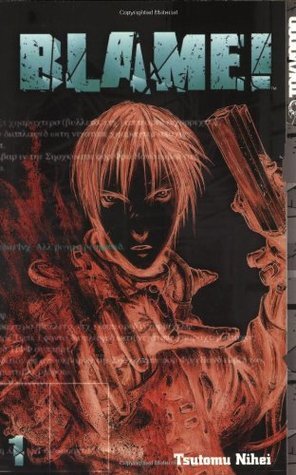
Image courtesy of Goodreads.com
What it is About?In a future world rife with decay and destruction, Killy is a man of few words who packs one very powerful gun. He wanders an endless labyrinth of cyberdungeons filled with concrete and steel, fighting off cyborgs and other bizarre silicate creatures. Everyone is searching for the Net Terminal Genes, but no one is quite certain what kind of power they contain. The answer may lie hidden among the scattered human settlements of this vast and desolate future world.
My ThoughtsI am flummoxed. I very much wanted to like this book. I feel like it would increase my “cool” factor exponentially if I did, but alas I was confused. As a reader, I don’t have a whole lot of experience with Manga as a genre. I have dabbled in it but never went swimming. That being said, I have quite a bit of experience in reading the cyber punk genre which is one of my favorites. Manga absolutely excels in it. “Ghost in the Shell,” and “Akira” are bonafide classics, and rightly so.
 But “Blame!” just didn’t do it for me. I can appreciate the quality of the artwork and the simplicity of the dialog: the dialog is minimalistic and it relies on the stark visuals to convey meaning and tone. But, I think it reached too far into starkness and loses any sort of context for the story. I got lost repeatedly and the characters ended up meaning nothing to me. Any die-hard manga fan should check out this novel but the average reader trying to branch out would be well served to check out “Akira” or “Ghost in the shell”.
But “Blame!” just didn’t do it for me. I can appreciate the quality of the artwork and the simplicity of the dialog: the dialog is minimalistic and it relies on the stark visuals to convey meaning and tone. But, I think it reached too far into starkness and loses any sort of context for the story. I got lost repeatedly and the characters ended up meaning nothing to me. Any die-hard manga fan should check out this novel but the average reader trying to branch out would be well served to check out “Akira” or “Ghost in the shell”.
The post Review – Blame! Volume 1 by Tsutomu Nihei appeared first on BEFOREWEGOBLOG.
Review of ILLBORN by Daniel T. Jackson
“Illborn”. Oh my.
 This book was an Self-Published Fantasy Blog-Off (SPFBO 7) semi-finalist last year. With the buzz surrounding this book coming into that popular contest, many readers thought the 700-plus page juggernaut had a real chance to make the finals or perhaps win the entire contest.
This book was an Self-Published Fantasy Blog-Off (SPFBO 7) semi-finalist last year. With the buzz surrounding this book coming into that popular contest, many readers thought the 700-plus page juggernaut had a real chance to make the finals or perhaps win the entire contest.
While this did not happen, “Illborn” remains on of the most hyped self-published fantasy books published recently. And of course, based on that, I was leery of a letdown, keeping this book high on my TBR for months, but not wading in. But recently, I felt the pressure of the sands of the hourglass running out, as new SPFBO (8) contest books would be taking precedence on my reading list.
I’m so grateful I finally took the plunge. Because “Illborn”, debut novel by author Daniel T. Jackson, and Book One in “The Illborn Saga”, a coming-of-age dark high fantasy, is spectacular.
The plot of “Illborn” revolves around the multiple POVs of four young people, two male, two female. Set a medieval-style world, with the bulk of the action taking place in the lands to the east of the Holy Land of the Christ-Like figure Lord Aiduel, the four youths, Allana, Corin, Leanna, and Arion have never met one another. Nevertheless, they are bound by a common, haunting dream that will irrevocably change their lives and set them off on a path towards an uncertain, yet seemingly unescapable destiny.
Allana lives in relative penury with her terminally ill mother, who was formerly a courtesan. Desperate, prompted by her dying parent, Allana turns to a former influential and high ranking member of the clergy for assistance.
But only sorrow awaits Allana when she takes the chance to reach out to High Priest Ronis for aid. The tragedy resulting from the fateful plea for help forces Allana to flee her homeland of Dei Magnus. But she is pursued by powerful forces seeking justice for crimes they believe Allana has committed, and they will not rest until she is captured and brought to judgement. Meanwhile, the haunting dream is also relentless, as it calls to Allana, with the words, “LUST, POWER, DOMINATION”.
A marriage match has been found for Leanna, who seems to be the perfect future husband. But Leanna experiences a sudden manifestation of Lord Aiduel, and feels compelled to pledge herself to Aiduel instead of her betrothed. Vowing to become a priestess of the faith, Leanna soon finds there is corruption, hypocrisy, and grave danger awaiting her on her journey towards trying to achieve spiritual fulfillment.
And the words “DEVOTION, SACRIFICE, SALVATION”, which drive her will be needed if Leanna is to achieve the sense of purpose and belonging that she seeks.
Arion Sepian is born a nobleman, the youngest heir of a great Duke. Sepain is skilled as a warrior, and dreams of being a great warlord, leading his father’s armies. But his father insists that Arion join the priesthood in order to increase the prestige and political sway of his noble house.
Yet fate has another plan for Arion, and he will pursue the meaning of the words that call to him: “STRENGTH, VICTORY, GLORY”.
Finally, Corin is called “The Runt.” Undersized, scorned, and ridiculed all his young life, he is given the chance for some small measure of redemption when his tribe goes on a war-raid. But Corin’s desire for self-preservation above all else leads to cowardice, and for his shameful actions he is exiled from his clan.
His faithful friend Agbeth is the only member of his group willing to join him on his travels to unexplored wilds. Corin will need to understand the words that hold his fate, “FEAR, CONTROL, ORDER”, so that he may survive what lurks, waiting to tear him apart.
All four of these characters, hearing their words whispering in their minds, begin to develop formidable powers, coinciding with the strange dream they all share. However, they must keep these burgeoning abilities to themselves, lest they be accused of witchcraft, heresy, and face the fires of the stake at the hands of those religious fanatics who exert enormous power and control in their society.
“Illborn” is precisely the type of book I adore: essentially a character-driven novel with emphasis on the evolution of the characters. The author does a superb job of moulding realistic characters that the reader can relate to, identify with, and ultimately care about deeply. Even if the reader will not always agree with the actions taken, it is highly likely that the characters motivations and choices will always be understood and seem very plausible.
Jackson brilliantly paints the picture for the reader as to how the main players discover their innate abilities, what the costs of using those abilities are to both themselves and others around them are, and just how far the characters are willing to go in order to achieve their goals. Each of the four narrative voices were very distinct, engrossing, and the reader will compulsively plough throw the book, NEEDING to know what happens to each main character.
I tremendously enjoyed all four protagonists, and I stayed up in the wee hours, irresistibly burning through pages, obsessively having to find out what happens next to each of them. I have not felt that attachment to SO MANY main characters at once since I read ASOIAF by the esteemed G.R.R.M.
This was one of the best paced books I have read for a book of this immense size. 700-plus page novels are rarely referred to as page-turners, but this one certainly qualifies. The book features one of the best prologues I have ever read in fantasy since “Hall of Bones” by Tim Hardie. The prologue is absolutely dynamite, dark, disturbing, and it only serves to whet the readers appetite for what is to come.
The constant spectre of the dream that binds the main characters together, and what it means for both them and the rest of the world, the continual individual trials and tribulations of the characters, and the gradual weaving together of the character’s physical locations as we wait to see how their paths will cross, and what the outcome will be when they do, really propel the story ruthlessly forward. This combination of these reasons to keep going through this book were heady, and I could not stop reading; you won’t be able to resist either.
Things evolve organically, and never feel too fast or too slow. The constant feeling of tension as we fret over the character’s fates, the violent confrontations, murders, and larger scale battle scenes, evil, depravity, love, lust, manipulation, and obsession, are intoxicating and make this book entirely unputdownable.
Jackson clearly states that his fictional world is based on medieval Europe and that is plain to see. “Illborn” at time feels like its historical fiction (another genre I love), and it works exceptionally well. While more generic, and with obvious inspiration from ancient Christianity, the English Reformation, the Spanish Inquisition, the Knights Templar, the Crusades, and more elements from the past, the descriptions of the settings are not heavily detailed. Somehow though, the book felt very fresh and inventive, despite the heavy reliance on borrowing from real history, and some beloved tropes.
Nonetheless, there is certainly enough elucidation to give the reader that feeling of ‘reality”, and that’s the most important thing when one considers the effectiveness of a writer’s worldbuilding.
Moreover, the world Jackson created is dark, can be brutal, and I found it very authentic.
Here we come to the thing that puts “Illborn” over the top for me and firmly into the “Book of the Year”: the dark, compelling themes and how they were handled by the perspicacious Jackson. The author tackles the weighty, sensitive, and utterly fascinating subject of religious intolerance, sectarianism, and seems to pose two interesting questions.
First question (for the reader perhaps) where is the line drawn between being a devout worshipper and being a zealot?
Second question (perhaps for the characters) where is the line drawn between being seen as a devout worshipper and being a heretic?
In “Illborn”, be utterly devoted to the point of fanaticism, and be willing to commit torture, murder, atrocities, in the name of religion, and one is a true believer. But dare have miraculous dreams or visions about Lord Aiduel, or believe one can do “miracles” in his name, and one can potentially be considered insane, and worst, an apostate and subject to sanctioned murder by the religious hierarchy.
This is a very complex and confounding contradiction humankind has grappled with about organized religion for centuries, and these are things I as a reader, writer, and person of faith have also personally struggled with. When a religious hierarchy – composed of other flawed, and sometimes even contemptible humans – decide who is a saint versus who is a sinner worthy of extermination, where is there any room for a genuine divine experience?
If one must live in constant fear of being “devout enough”, or being considered an iconoclast, does that not rob some of the joy of being a believer from those who believe? Does that not drive people away from the faith? How can one stay true to a religion whereby the people who control the religion might kill you for what you believe is the contrary: signs that you have actually being specially blessed by the deity?
Final comment, overall the book is very written. While not as ornate as I often enjoy, Jackson’s prose delighted me. It struck that perfect chord between keeping me engaged in the story and keeping things flowing, versus diverting me with how lovely the words on the page were.
Jackson spins a marvellous tale of desire, loss, forbidden powers, beatific visions, rife with political and religious intrigue, overcoming and adapting through adversity, facing ones fears, and thrilling action. Jackson skillfully weaves it all together via multiple POVs, each one, that the reader will care about. It’s a mastercraft effort, especially for a first novel. Everything about it resonated with me, and after more than 700 pages I did not want it to end. I wanted more.
Amongst a lot of phenomenal books, “Illborn” might end up being my BEST read in 2022. Highly recommended, stars off the rating scale. I will be thinking about this book forever, and can’t wait for the next installment.
Final word: BLACKPAW!!!
Read IllbornReview- Stones of Light by Zack Argyle
Review -; The Fires of Vengeance by Evan Winter
The post Review of ILLBORN by Daniel T. Jackson appeared first on BEFOREWEGOBLOG.
Review of WHERE LOYALTIES LIE by Rob J. Hayes
This book was obviously a worthy SPFBO champion in its day, and everyone I respect who has read Rob Hayes’ other books rave about them.
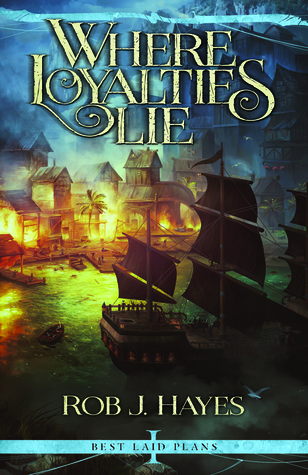 Lechery, scheming, tense battles, giant centipede pet, and mayhem on the waters! A wonderful romp through a world of piracy and intrigue! So went my third book in my #Grimdarkmasters reading month, where in the month of April 2022 I dedicated most of TBR to reading four of the most lauded Indie grimdark writers, fantasy author Rob J. Hayes being one of them. The book I read by Hayes was “Where Loyalties Lie”, the first book in a duology called “Best Laid Plans”.
Lechery, scheming, tense battles, giant centipede pet, and mayhem on the waters! A wonderful romp through a world of piracy and intrigue! So went my third book in my #Grimdarkmasters reading month, where in the month of April 2022 I dedicated most of TBR to reading four of the most lauded Indie grimdark writers, fantasy author Rob J. Hayes being one of them. The book I read by Hayes was “Where Loyalties Lie”, the first book in a duology called “Best Laid Plans”.
This book is a monster in the self-published world, and won the entire Self Published Fantasy Blog-Off’s (SPFBO) 3rd year contest (2017), capturing the coveted Selfie Stick Award, and helping to propel Hayes to Indie fantasy notoriety. After reading it, I can see why this book is so popular, and why it managed to beat out a lot of other great books to capture an SPFBO crown.
I recently watched “The Lost Pirate Kingdom” docuseries on Netflix, and in my head if “Where Loyalties Lie” were brought to the small screen, it would look something like that. That Netflix series chronicled some of the lives of the most feared real-life pirates of the Caribbean, including Blackbeard, Black Caesar, Anne Bonny, Calico Jack, Benjamin Hornigold, and more. It was a fascinating slice of history that revealed the fact that amidst all the marauding and plundering, the pirates managed to set up a quite egalitarian pirate republic in Nassau, Bahamas, in the 18th century.
Captain Drake Morass, one of the main characters in “Where Loyalties Lie”, paralleling real-life Captain Benjamin Hornigold, also wants to unite the pirates in Hayes’ world under one banner. But instead of a republic, Morass envisions it being more of a monarchy, with him as the king.
Morass has some issues that might get in the way of his desired kingdom. He’s a wanted man by some pretty powerful enemies, seeking to kill him. Luckily, or perhaps unluckily, Morass’ brother is influential, and sends an Arbiter (described by Morass as a ‘witch hunter of the Inquisition’) to protect him. That Arbiter’s name is Beck. Beck packs a set of six pistols, deadly accuracy, nerves of steel, and alluring beauty that Drake can’t help be drawn to.
This desire of Morass’ is at the heart of the plot for “Where Loyalties Lie.” Morass, a charming, ambitious, ruthless schemer, might actually have some semi-altruistic motives for wanting to untie normally feuding and competing buccaneers. The Five Kingdoms have banned together in a mission to exterminate the scourge of piracy, and have vowed to hunt down and kill pirates to the last woman and man. Divided and vying over ill-gotten booty, the pirates don’t stand a chance against the might of the Five Kingdoms forces unless they band together to stave off annihilation.
Morass, a big-picture thinker, sees this clearly, along with the chance to earn himself further glory, riches, and supremacy.
But Morass can’t accomplish his vision alone. He needs some of the other fiercely independent and well-respected pirate captains to buy into his plan, in order for it to have a hope of success. His prime target to have as his lieutenant is another charismatic and famous captain, Kevin Stillwater, known as the best swordsmen amongst the pirates.
Stillwater has an interesting reputation beyond his swordplay – he abhors violence and attempts to mitigate bloodshed to the lowest denominator when invading and capturing ships. Stillwater’s life is complicated, and one of the biggest complications is his on-again / off-again entanglements with another ferocious pirate captain – who is the daughter of perhaps the MOST feared pirate – named Eliana Black.
Eliana’s father is the brutal and sadistic Tanner Black. Black is the biggest, baddest pirate on the seas, and if anyone is going to be lording over anyone, it’s him, not Morass. And Black seems quite willing to step over Morass’ corpse to make sure of that.
Of course, for me, the most important element of any book is the characters and boy does this one have some colourful ones that I truly enjoyed. All the aforementioned are wonderfully shaded in grey, with divided loyalties, insecurities, secret desires, inner turmoil and conflicts, and underneath all the complexities (even the horrible Tanner Black) some sense of moral code, even if it is hard to decipher.
An amazing job here by Hayes to create a character-driven book that certainly does not sacrifice the plot, because it’s all frontal, very fast-paced, full-throttle, with conspiracies, intrigue, tense and bloody nautical battles, raunchy sex, magic, superstition, and tension. Everything always seems on the edge of falling apart for the two main captains, Morass and Stillwater, as they struggle to keep hold of their own crews, get into deadly confrontations with enemies, manage their romantic relationships, and just plain stay alive, and it keeps the suspense factor high.
Be warned re: triggers – there is a rape scene, and it is fairly violent and jarring. The person who is sexually assaulted is not a powerless figure by any means; I did not find the scene to be gratuitous by any means; and it was consistent with the plot and character arc as far as I could discern, yet still hard to read.
This is in keeping with the fact that this is a very grim book, despite the excellent dark humour and moments of lighthearted banter that permeate the novel. Women and children are slaughtered, people are massacred and tortured, and the battle scenes are not for the squeamish. There is also the psychological darkness of the book, which is very well done, but Hayes does not shy away from topics like substance addiction, manipulation, religious fanaticism, and brutality.
The world building was exceptional. It was layered, and included such features that I loved such as the differences between the numerous pirate islands (the Island of Many Deaths was an awesome concept) , sea monsters, (did I mention the giant pet centipede? really creepy but very cool!) an underground race called the Durr, the Arbiters previously mentioned, which are magically endowed beings who pursue, torture, and interrogate (hence Inquisition) people they consider heretics (which Stillwater is violently opposed to, bringing him into direct conflict with Morass’ protector and object of affections, Beck, setting up some additional explosive potential). Hayes does exceptional work of painting a lush world seen largely from the waters, complete with its own mythologies, cultures, and intriguing landscapes.
To top it off, the name for one of the brothels, “The Merry Fuck” is priceless!
This book was obviously a worthy SPFBO champion in its day, and everyone I respect who has read Rob Hayes’ other books rave about them. Hayes is a fantastic writer and truly a master of grimdark fantasy, based on this book, and his reputation for excellence, and I am very happy to have finally read some of his work!
Easily five stars for “Where Loyalties Lie”, and I can’t wait to see where things go in the concluding volume “The Fifth Empire of Man”!
Read Where Loyalties LieThe post Review of WHERE LOYALTIES LIE by Rob J. Hayes appeared first on BEFOREWEGOBLOG.
June 25, 2022
#Bookcook American God’s American Pie

About the Book – American Gods by Neil Gaimon
Days before his release from prison, Shadow’s wife, Laura, dies in a mysterious car crash. Numbly, he makes his way back home. On the plane, he encounters the enigmatic Mr Wednesday, who claims to be a refugee from a distant war, a former god and the king of America.
Together they embark on a profoundly strange journey across the heart of the USA, whilst all around them a storm of preternatural and epic proportions threatens to break.
Scary, gripping and deeply unsettling, American Gods takes a long, hard look into the soul of America. You’ll be surprised by what – and who – it finds there…
Ahh, the quintessential American dessert. What better way to celebrate the war between the old gods and the new than with a slice of apple goodness.
I hear even Thor likes a slice in Valhalla or Biloxi. Wherever he is at this moment.
Here is a great recipe for an apple pie I have made a few times. Don’t drop it on your metal breastplate, apple goo never comes out of the ringlets.
Buy American Gods by Neil Gaiman
APPLE TART WITH ALMOND PASTE FILLING RECIPE
“What I say is, a town isn’t a town without a bookstore. It may call itself a town, but unless it’s got a bookstore, it knows it’s not foolin’ a soul.”
American Gods – Neil Gaimon

Apple Tart with Almond Paste Filling
Prep Time 25 mins
Cook Time 50 mins
Total Time 1 hr 15 mins
This Apple Tart has a hidden layer of delicious homemade almond paste underneath the apples. It is a wonderful dessert for Fall and will for sure be a hit at any of your holiday dinner parties. Course: Dessert Servings: 8 – 10 Author: Wild Wild Whisk
Ingredients For crust:
1 1/4 cup all-purpose flour
4 oz unsalted butter 1 stick
2 tablespoon granulated sugar
1/4 teaspoon salt
3 tablespoon cold water
For almond paste:
1 cup almond meal/flour
1/2 cup powder sugar
1 egg white
1/4 teaspoon almond extract
1/8 teaspoon kosher salt
For apple topping:
2 large honey crisp apples or 4 small ones
1 tablespoon granulated sugar
1/4 teaspoon cinnamon
1 tablespoon unsalted butter – melted
Instructions
For almond paste, add almond meal, sugar, egg white, almond extract and salt to a bowl, mix well until combined. Cover and refrigerate until ready to use. Almond paste can be prepared well in advance and store in the refrigerator for up to 10 days.
For the crust, place flour, sugar and salt in the food processor fitted with the dough blade and pulse a few times to mix.
Cube the butter and add to the flour mixture. Make sure butter is cold. Pulse several times until butter is about pea size and mixture resembles coarse crumbs.
Add cold water, 1 tablespoon at a time, and pulse until the dough starts to pull together. Be mindful not to overmix, you still want chunks of butter in the dough to create a flaky crust.
Turn the dough out on a lightly floured board and shape into a disk. Wrap in plastic and rest in the refrigerator for an hour.
Roll dough out into a circle about 1/4” thick and large enough to fit your tart pan. Transfer the dough to your tart pan and lightly press into the bottom and sides. Let the extra dough hang off the edge, then take your rolling pin and press along the edge of the pan to take off the extra dough.
Cover the dough in plastic and place in the freezer.
Move your oven rack to the lower third of the oven and preheat to 400°F.
Peel and cut apples into 1/8” thick slices.
When the oven is ready, take the crust out of the freezer. Take the almond paste, lightly spread and press it to the bottom of the crust so it covers the entire surface.
Arrange the apple slices on top of the almond paste. Brush the melted butter all over the apples. Mix the sugar and cinnamon together and sprinkle on top.
Bake for 50 minutes.
Let cool on a wire rack before serving
#Bookcook The Pan-Galactic Gargle Blaster and Smash a Gold Brick Into Your Face
The post #Bookcook American God’s American Pie appeared first on BEFOREWEGOBLOG.

